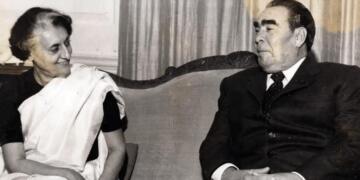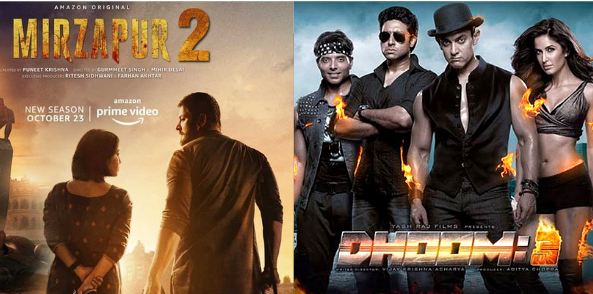Imagine a Primetime Emmy award-winning TV series like Breaking Bad churned out in India and following a breakout first season, it is renewed for a second season. And imagine in the second season Walter White completely metamorphoses into the pseudonym of Heisenberg in the first episode itself and kills the villain Gus Fring by the end of it, whilst simultaneously taking down the Cartel. Also, it tries to take a subtle dig on the current NDA regime by fixing the responsibility of Walter turning to cook drugs as a result of some diabolic government policy.
Would seem rushed and illogical, no? Having no significant character development, and trying to haze through the script, to rake in all the money, using the initial hype train. Well, if this analogy rings any bell, then it neatly brings us along to the state of Indian TV shows and movies and how they squander the initial success of its products for short term measly gains.
Breaking Bad is considered the pinnacle of modern TV shows because it took its time throughout five seasons to tell a coherent story where the audience felt invested in the characters, knew their motivations, and to some degree associated with them.
Characters were introduced slowly and had rich layers which the audience took its sweet time to peel off. It felt organic and just right. It was because the quality of the series remained consistent that a spinoff in ‘Better Call Saul’ was produced that had enough legs to last multiple seasons on its own.
However, the same cannot be said about Indian TV serials. The top OTT web series like Sacred Games, Mirzapur and others went downhill in quality in the second season from the high notes they had hit in their respective first seasons.
Usually, the degradation in quality is directly related to the incessant urge of the woke and usually leftist ‘Social Justice Warriors’ to insert their tropes of the symbolism of revolution in the serial. Sacred Games tried too hard to make Hindus the thug and the gangsters of the society. Babri Masjid demolition and the Ayodhya issue were seemingly weaved into the narrative of protagonist Gaitonde’s arc.
Also Read: Rohan Sippy who gave Bollywood some beautiful films
The fact that the series tries to paint imaginary Hindu militants and militancy on par with the reality of the outer world where radical Islamic terrorism is the biggest threat was simply too crude of a twisted idea, motivated by personal vendetta of the writer that just didn’t sit tight with the viewers.
As an audience, one likes to watch cinema that spares them the sanctimonious hogwash of usual tropes of Wokeism. We are going to the hall or subscribe to the OTT platform to watch some cinema, not to be educated by a ‘fat-positivity-movement-activist’ spearheaded by an excessively overweight woman who is against those who are working out in the gyms to get in the best shape of their lives.
Similar was the case with Mirzapur that was set up in the landscape of Poorvanchal politics. Like Sacred Games, the second season of Mirzapur tried too hard to sell itself. When sex, cuss words and a whole lot of gibberish dialogues become the sole condiments driving a season for the majority of 10 episodes, then a series is setting itself for failure. And that is what happened with Mirzapur.
The first season played to its strengths and knew its boundaries. But in the pursuit of reaching for the glory at the zenith, the creators, overambitious in their approach, timed their sojourn perfectly into the ground.
There are hundred other examples where a TV series matured and took the audience with itself to uncharted territories which were never explored before. Take Game of Thrones as the departure point. Barring the aberration it was after season 7 – the series was perhaps the most dynamic world-building exercise the world has seen in a TV universe. It paved the path for such TV shows to be produced for the TV audience, something which the Indian public can only imagine being recreated on the Indian shores.
As for the 70mm screen, take Marvel cinematic Universe for example. The studio punts its fortunes on building a world that took more than 10 years in the making and eventually paid off handsomely with Avengers Endgame that dethroned Avatar as the highest-grossing movie in the entire world.
However, what DC and Warner Bros did with Justice League, trying to cram 100-new, different characters in one movie and trying to recapture the success of ‘Avengers franchise’ and hoping to get on par with them by bringing Joss Whedon’s Justice League was a perfect example of what Indian TV creators try to do.
They want to emulate the success of the Western shows but do not want to put in the painstaking effort to weave the threads of continuity, by working incessantly like a mad scientist on the product. Once the patent is out and marginally successful, the Indian producers milk it and milk it to an extent that the serial becomes obsolete within a season or two.
Talking about the Indian movies, of which several have had sequels, the directors, over time, tend to not pay heed to the overall plot of the movies in the series – making them monotonous and boring. Take, for example, the case of the Golmaal franchise. The first movie in the series was undoubtedly a grand success but the other three sequels lost the charm over the years. The same was the case with other film series like Dhoom, Housefull, and others as the audience clearly seemed bored with the same masala over and over again. In fact, the first movie in the Dhoom series was a major success as the villain but the other two sequels to the movies couldn’t cater to the audience in a similar fashion. However, as an exception, the two parts of Anurag Kashyap’s Gangs of Wasseypur were largely successful as the plot for both the movies were well-planned.
The world of building a tiny microcosmic cinematic universe is a rewarding experience, both for the audience as well as the creators. But there are certain protocols that you cannot jump the gun upon and hope to reap similar rewards to the Western counterparts.
We are not nihilists of the world that have an inferiority complex that anything churned by an Indian is of low value. However, we have come a bit ahead after years of carrying the emotional baggage of daily soaps.
Thus we are optimistic that the two-season quagmire that Indian TV shows currently find themselves in can be worked out — for we all need is some genuine and hearty entertainment on our TV sets with just the right amount of consistency. Enough of the one-season wonders, eh?































